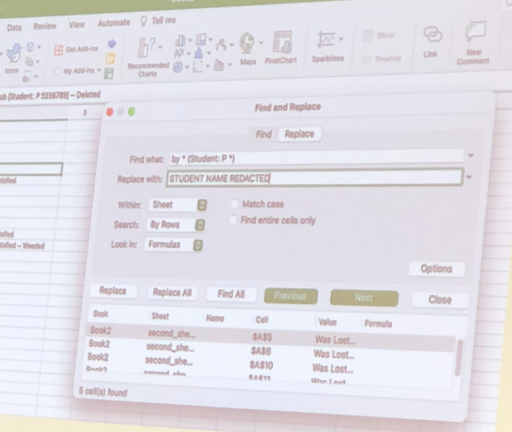Reporters in many countries with freedom of information access (FOI) laws sometimes receive massive fee quotes from government agencies to retrieve, duplicate, redact, or export extensive public records they’ve requested.
But it turns out that, with a little research and negotiation, reporters can sometimes slash the cost of obtaining records bundles and speed up the government’s response in the process.
Experts say that reporters should not automatically accept large fees quoted by FOI officers, and should remember that these officials are typically concerned with their estimated time burden, and not the cost figure. Also, keep in mind that reducing the cost of your request by reducing their time burden will likely shorten the time until you receive the files you want.
In one short presentation at the recent NICAR data journalism summit in the US that received loud applause from attendees, Sharon Lurye, a data journalist at the Associated Press, explained some principles to cut FOI costs, using the examples of two recent cases where she saved her newsroom thousands of dollars and still got the necessary records. In one case, she was able to slash a quoted FOI fee of $2,822 down to $130 — and, not satisfied with that huge reduction — then cut it further, to just $29. In another case, she reduced a quoted fee of $900 to zero.
1. Ask the information officer “What is the most expensive or burdensome part of my request?”
Lurye asked a school district in the US state of Georgia for a list of books removed from school libraries over six years, and the district agency estimated a cost of $2,822 to send 80,000 pages of records. The information officer explained that it would involve 113 labor hours to manually redact names of librarians and school children from the bundle, and to send all of the pages in PDF format.
“Emphasize that you don’t want to over-burden them,” Lurye explained. “If something takes less time for them, it means less cost for you. Always do your research to know exactly what you’re asking for, and in what format it’s going to be in.”
2. Check whether there are opportunities for less expensive export formats — and offer to help officials with the formatting tools
Although she had been informed that the library document management system could not export documents in the far cheaper Excel format, Lurye called a librarian directly to check what systems were available to the district, and asked them if they could, in fact, export as an Excel spreadsheet.
“They said ‘Yeah’ — and I sent a YouTube video tutorial on how to export as an Excel!” she recalled, chuckling. “I also wrote instructions on how they could delete a column that would be redacted anyway. That brought [the quote] down to $130.”
She added: “Sometimes government agencies reply: ‘This is a lot of work because this involves programming’ — and you can say, ‘Great — we have data journalists; let us do the programming part!”
3. Ask for a sample page of the records early on — and look for the elements that would make the eventual bundle expensive
“They said they still had some work to do to redact names — but I said I still didn’t want to pay that $130,” she explained. “Because they’d given me a sample, I could see that all the student names followed a simple pattern. So I wrote out how to exclude all that, and sent them a screenshot for how it would look. After that, the final cost was $29 for 45 minutes’ work.”
The screenshot Sharon Lurye sent to a district information officer to explain a simple procedure for redacting student names in FOI documents — which saved her newsroom an extra $101. Image: Screenshot, Courtesy of Lurye
4. Adjust the scope of your request by eliminating unneeded records
For another investigation, Lurye requested records relating to student monitoring software from 2022 onwards for a school district in the US state of Kansas. The information officer responded that it would take about 60 labor hours, at an estimated cost of $900.
“So I asked which part of the request would take up the most time in terms of staff hours,” she explained. “Usually, these fees are calculated by multiplying the number of hours by whatever they pay their staff. They said the difficulty was retrieving records prior to November 2023, because they were using a different system back then. So I said I actually only care about the records since the new system came online. So they sent the records from November 2023 onward. I got the whole thing for free!”
5. If needed, ask for “the lowest acceptable rate” for the labor cost of individuals retrieving the records
For their investigation into deaths resulting from police vehicular pursuits in the US, San Francisco Chronicle reporters Jennifer Gollan and Susie Neilson cut their public records fee estimates through firm negotiations grounded in knowledge of their rights under FOIA laws.
The pair not only asked for itemized costs for each portion of the retrieval work, but also for the job titles and hourly pay rates of the individuals who would do the work.
In an interview, Neilson told Harvard’s Journalist’s Resource: “One thing Jennifer taught me that I thought was really smart is when you push back on some of these costs, you want to confirm that the hourly rate for labor is the lowest acceptable rate — the amount it would cost the lowest paid person to produce the records.”
Out of habit, some agencies often mistakenly calculate fees for electronic records based on their former fee formulas for costly paper records. So Gollan recommends that reporters should always confirm with information officers that fees for electronic records have been updated to reflect (cheaper) digital formats.
 Rowan Philpis GIJN’s global reporter and impact editor for GIJN. Rowan was formerly chief reporter for South Africa’sSunday Times. As a foreign correspondent, he has reported on news, politics, corruption, and conflict from more than two dozen countries around the world.
Rowan Philpis GIJN’s global reporter and impact editor for GIJN. Rowan was formerly chief reporter for South Africa’sSunday Times. As a foreign correspondent, he has reported on news, politics, corruption, and conflict from more than two dozen countries around the world.
